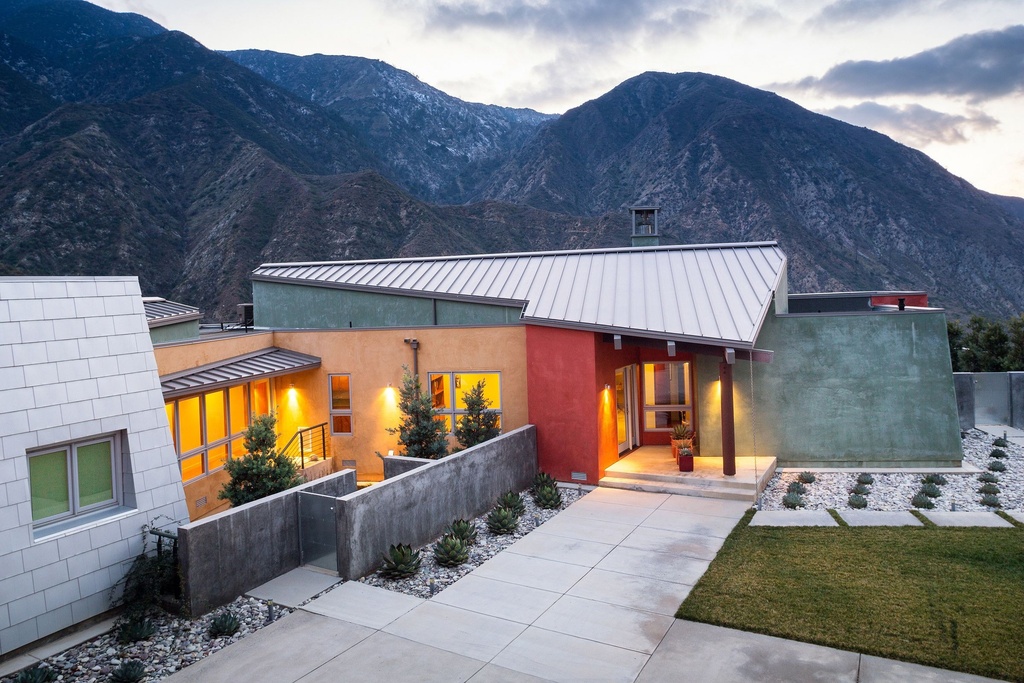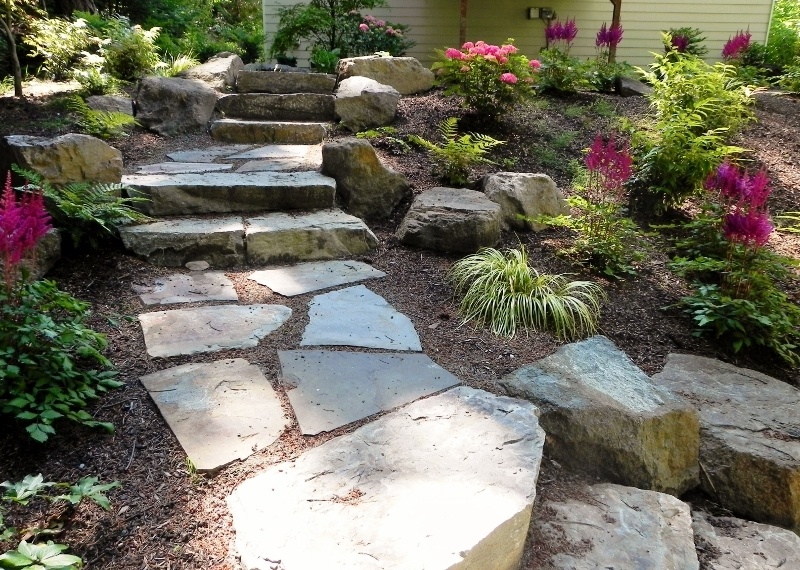Here in California, where my husband Tarek and I do most of our house flipping, we always have to think about the weather when we plan our landscaping. We never want to spend money on landscaping that'll look great for a week and then wither and die if it doesn’t get a ton of watering and maintenance.
With the ongoing drought in our area, I've been thinking a lot lately about landscaping designs that don't need much watering but can create a cool, low-maintenance, high-curb-appeal look for buyers. Here are a few of my favorite tips.
Don't give them a golf course
First of all, buyers today aren't necessarily looking for homes with front yards that are covered in uniform grass, and that's good news for you as a house flipper. The golf course look takes a lot of watering and maintenance to keep up.
A front yard with less grass and more water-wise landscaping can save buyers money on their utility bills, and it can save them time on mowing, too. Not only that, but they won't have to worry about their lawns dying if their area is under a water restriction.
Small changes can make a big difference
You don't have to completely get rid of grass or go with some crazy landscaping design that looks totally out there. Even the smallest water-saving changes can make a huge difference.
For example, plant a few water-conserving shrubs around the front of the house and in an island in the yard, then lay mulch around them so your buyers have less grass to mow. A stone garden can do the same - and it'll save even more water since rocks don't need any moisture.
Use water runoff for thirstier plants
Everyone loves to see greenery and blossoms in their yards, so I'm a huge fan of this particular tip. Take a look at the yard and find the places where you get the most water runoff. Do you have a low corner of the yard, or does the lawn slope down to the sidewalk?
Plant your shrubs and flowers here, surrounded by a bed of mulch or gravel. And be sure to group thirstier plants together in the lowest spaces so that they can soak up the most moisture.
Don't forget the architecture of the house
As you start to choose plants, mulch, gravel, and other details, don't forget about the design of the house itself. Choose landscaping elements that match the architecture of the house and highlight its features.

Courtesy of Zillow Digs.
You want to have a front walk and entryway that flow and draw people in, so you may want to plant a couple of bushes at each end of the walk or along each side leading up to the house. Landscaping details should create borders and edges along the walk, yard, and house to draw attention and make the property look cohesive and attractive.
Create a park-like backyard
Of course, your front yard won't be the only place you're landscaping. You also have to think about the backyard, and how you can make it really inviting to your buyers. People love having a park-like backyard where their kids can play, and they can have friends and family over on weekends and special occasions.

Courtesy of Zillow Digs.
You don't have to plant a bunch of water-thirsty trees and shrubs to get this effect, though. I'm a big fan of adding a patio and/or some hardscaping instead of traditional landscaping with plants.
For example, you could place a fire pit in the middle of a circular area where you lay gravel, then edge that gravel with bricks or flat stones. The effect is cozy and attractive, and it doesn't require any watering at all. Plus, it gives your buyers a place to gather and enjoy each others’ company.
Always think of families
Family is really important to me and Tarek, and not just because we have two great kids who we love to watch playing in the yard. We've created a space in our backyard that's a huge hit with our extended family when we have them over on Sundays.
When I worked with our landscapers to design our backyard, I considered shade and seating, space for the kids to play, and an overall aesthetic that's warm and inviting.

Courtesy of Zillow Digs.
You can do the same with your flip-house backyards if you consider a few important factors:
Where is the traffic in the yard?
Wherever you have people walking through a yard, you're going to have worn down, ugly grass unless you plan for that traffic. Look at the paths people will be using in the yard and create water-conserving landscaping solutions around them.
This could mean having a paved or gravel walkway from the back patio or deck to the fire pit. It could also mean planting sturdier, heartier grass in your high-traffic areas, then planting drought-tolerant decorative grasses, like Japanese bloodgrass, along each side.

Courtesy of Zillow Digs.
Will the buyers have pets in the backyard?
Next, consider how the yard will look if the buyers let their pets hang out in the yard on a regular basis. You can't predict whether someone's dog will dig holes all over the yard or not, but you can avoid choosing really delicate plants that will get ruined when the family cat decides to chew on them or take a nap on them.
Other animals in the area
Speaking of animals, your buyers' pets aren't the only ones to worry about. If the area where you're flipping in has moles, rabbits, deer, or other wildlife, you should take a minute to get to know what they eat and what they'll avoid. In a drought, these animals are going to come looking for food and water, which means you could be creating a haven for pests if you put in a water feature or a lot of thirsty plants.
Instead, do some research on plants that repel animals and bugs. For example, did you know that mosquitoes hate lavender? It's a beautiful plant with a sweet smell that most people like, but it's a natural pest deterrent. Sounds like something you might want to consider planting around the patio, doesn't it?
Consult a landscape architect, contractor or local garden center
You don't have to figure all of this out on your own. If you plan on having the pros do your landscaping, talk to your landscape architect or contractor about droughts, thirsty plants, and other factors.
If you're doing the landscaping on your own, ask the people who work at your local garden center for advice. They have a lot of knowledge about this kind of project, and they can help you make the right choices for attractive front- and backyards that won't guzzle a ton of water every week.
Good luck and happy landscaping!
Related:
- Would You Flip for Flipping? Secrets, Scams, and Successes
- Easy, Effective Ways to Save Water at Home
- Are You Ready for a Hot Seller Season?
from Zillow Porchlight | Real Estate News, Advice and Inspiration http://www.zillow.com/blog/drought-tolerant-landscaping-197649/
via Reveeo
No comments:
Post a Comment